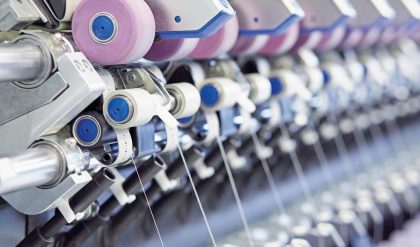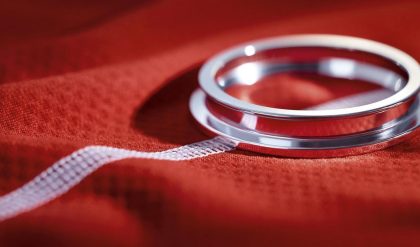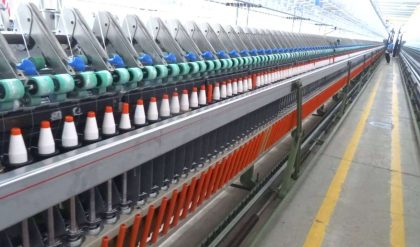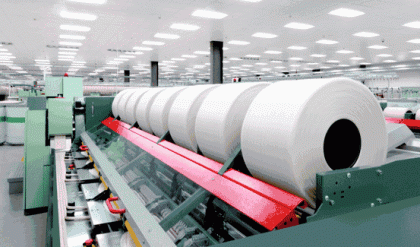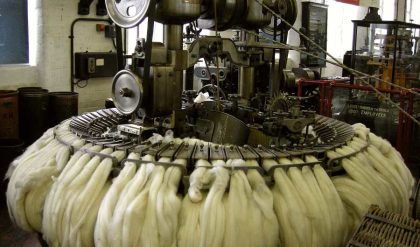The feed stock in form of either card sliver or draw frame sliver from first or second passage drawing. The sliver runs from a can beneath the spinning unit into the feed trumpet. A feed roller grips the sliver & pushes it over the feed through into the region of the opening roller. A spring ensures firm clamping of the sliver by urging the trough towards feed roller. In the event of an end-break, the feed unit is stopped either by stopping the feed roller rotation or by pivoting the in feed trumpet, in each case sliver feed stops automatically. The signal pulse causing this effect is generated by a yarn-sensing arm.
In the in conventional spinning processes, the fiber strand at in feed is maintained as a coherent structure & is merely attenuated during spinning. In rotor spinning, the fiber strand is opened to individual fibers. This task is performed mainly by the opening roller. This small roller which is clothed with needles or saw teeth, combs through the fiber beard projecting from the nip between the feed roller & the tough it transports the plucked fibers to the feed tube. An air flow is needed for further transport of the fibers to the rotor. This is generated by central fan that draws air by suction through leads from each rotor box. To facilitate generation of this under pressure, the rotor box must be hermetically sealed as far as possible. The suction stream in the feed tube lifts the fibers off the surface of the opening roller & leads them to the rotor. In the course of this movement, both the air & the fibers are accelerated because of the convergent form of the feed tubes. This represents a second draft following the nip trough/ opening roller & giving further separation of the fibers. Moreover partial straightening of the fibers is achieved in this air flow. A third draft arises upon arrival of the fibers on the wall of the rotor because the peripheral speed of the rotor is several times as the speed of the fiber. This is a very important feature because it contributes significantly to good orientation of the fibers. The last straightening of the fibers occurs as the fiber slides down the rotor wall into the groove under the influence of the enormous centrifugal forces work within the rotor.
Speed Interrelationship:
· Normal & maximum revolutions & speeds are
· Rpm of opening roller :5000 -10000 rpm
· Rpm of rotor up to 100000 rpm
· Delivery speed: up to 200m/min.
Technical Data of Rotor Spinning Machine:
· Number of spinning positions per m/c up to 220
· Count range 12- 125 Tex (5 – 50 Ne)
· Draft 25- 400
· Speed of rotation of opening roller 6000- 11000 rpm
· Rotation speed of rotor up tp 120000 rpm
· Rotor diameter 32 -65 mm
· Delivery speed ( m/ min) up to 200
· Package mass up to 5 kg
· Angle of taper 2° – 4° 20’
· Winding angle 29° – 45°
